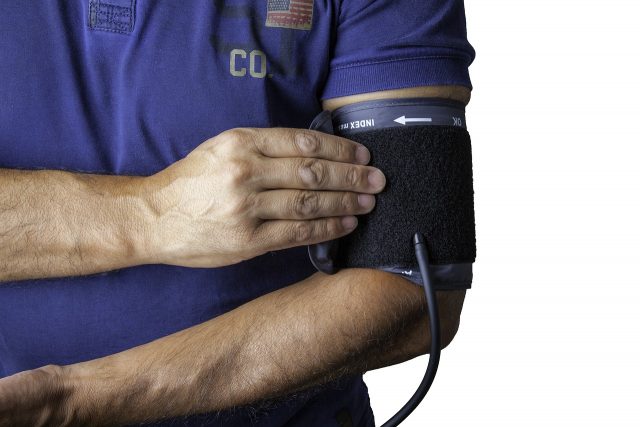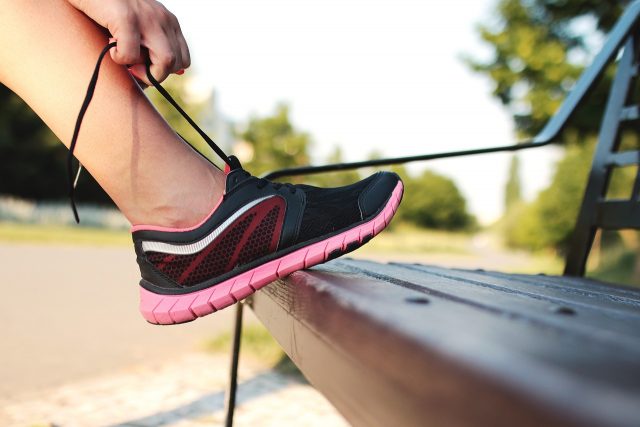Many people assume that the best way to burn fat, build muscle, and increase endurance and speed is to go for long distance runs. While distance runs are important in a number of different ways, sprint training should also be an important part of any runner’s training regimen, regardless if you are a serious marathon runner or casual racer.
This article will discuss why sprinting workouts are important, as well as how to incorporate sprinting workouts into your weekly running routine.Why Should I Incorporate Sprinting Into My Workout?
Sprinting can seem intimidating, especially to beginners who have little to no experience on the track. However, there are plenty of good reasons to incorporate sprinting into your weekly workout routine.
- Sprinting Workouts Build Muscle
- Sprinting Workouts Burn Fat
- Sprinting Workouts Can Help To Control High Blood Pressure
- Sprinting Workouts Help To Build Speed While Training For Longer Races
When it comes to sprinting workouts, a good rule of thumb is to be as explosive as possible. This activates fast twitch muscles which help lend the appearance of more muscle mass. More muscle mass also means more potential to run faster and accelerate more quickly.
Going through cycles of sprinting and resting by jogging or brisk walking is a great way to train both slow twitch and fast twitch muscles, and it’s also a great total body exercise, working the glutes, legs, and core muscles. Adding sprinting into your workouts can increase your lean muscle mass without the use of traditional equipment such as dumbbells, barbells or machines.
In addition to growing your muscles, sprinting helps to reduce your body fat stores, which also help to reveal your hard-earned muscle. For females who wish to get that lean and toned look, sprinting helps with that. What’s more interesting is that sprinting helps to burn fat both during the workout and after the workout. A sprinting workout for twenty minutes will burn more calories than walking or jogging for twenty minutes due to the higher intensity, which creates an afterburn effect.

Additionally, high intensity workouts help to increase your metabolism, meaning that your workouts continue to work for you even after your workout is complete, burning more fat.
Millions of Americans struggle with high blood pressure, placing them at a higher risk of developing heart disease, heart attack, and stroke. Diet change, medication, and regular physical activity can all help to lower high blood pressure, sprinting is a particularly great way to lower hypertension. Recent studies have shown that those who are sprinting regularly rather than aerobic exercises have lower blood pressure readings over all.
Of course, if you are suffering from high blood pressure, it is important to talk with your doctor to ensure that you are healthy enough for any high intensity workouts, including sprinting, to ensure you do not exasperate your underlying condition. Those with cases of dangerously high blood pressure will need to lower their hypertension in other ways before benefitting from sprinting.

For those who are training for half-marathons or longer races, it can be tempting to focus simply on distance training. After all, packing on the miles can only help when you are training to race multiple miles, right?
However, at least once a week, many experts suggest participating in sprint training in order to increase speed and endurance so by the time your big race comes around, you are running quickly and efficiently throughout the entire race and are able to hit your personal best or goal time. These workouts will help you explosively start and cross the finish line.
Tips For Getting The Most Out of Your Sprinting Workout
- Take Time To Warm Up
- Follow Proper Form
- Use Short Strides
- Get the Right Shoes
- Don’t Forget To Breathe
It is important, as with any type of high intensity workout, to ensure that you give yourself ample time to warm up before jumping right into your workout. Prior to any sprint workout, it is important to make sure you warm your body up through stretch, and at least five to ten minutes of walking or jogging prior to your sprinting.
Likewise, after a sprint workout it is important to walk or jog as a cool down to give your muscles time to adjust instead of stopping abruptly.
In order to make the most of your sprinting workouts, it is important to make sure that your form is correct. Proper form will also ensure you do not hurt yourself. If you are struggling with your form, ask another running friend to critique your method or utilize a video camera to watch yourself and make adjustments as needed.
Properly form includes your shoulders back, your back straight, your back engaged, and your arms are at a ninety-degree angle and helping move you forward. Your arm movement while jogging should be more exaggerated than walking or running.
During long races, it may be beneficial to use longer strides. However, while doing sprint workouts, it is important to use short strides to conserve energy and keeping your movement efficient.
Additionally, utilize proper foot landing in order to make the most of your workout. Land on the front half of your foot and push forward from your toes to explode throughout your workout.
This should go without saying, but many runners suffer through the pain of poorly fitting shoes and risk long term injury in the process. Take your current running shoes into a local running store, where they can analyze your gait and suggest properly fitting shoes for your needs. Properly fitting socks made out of sweat wicking material can make a huge difference as well.

While sprinting, it can be easy to let your breathing technique go. However, it is incredibly important to relax and breathe as regularly and naturally as possible, and match your breathing with the rhythm of your feet. If you stay tense and breathe irregularly through your workout, you will fatigue more quickly and waste important energy during your workout.
Beginner Sprint Workout
There are a variety of different sprinting workouts for beginners. Here are a few suggestions about how to get started incorporating sprinting into your workout regimen.
Jason Carp has a PhD in exercise physiology and is an author who has written multiple books on running, and is considered by many to be one of the forefront experts in running and exercise. His suggested sprint training is such:
- For two minutes, warm up with a brisk walk
- For 30 seconds, jog at 25 percent capacity, followed by a brisk two minute walk
- For 20 seconds, run at 50 percent capacity, followed by another brisk two minute walk
- For 15 seconds, run a 90 percent capacity, followed by another two minute brisk walk
- For 10 seconds, run at 100 percent capacity, followed by four minute brisk walk
- Complete this interval two to five times, in accordance with your current skill level
- For five minutes, cool down with a brisk walk or easy jog
Ladders are another popular way to get into sprinting and can be tailored to continue on as you become a more regular sprinter.
- Start with a light jog or brisk walk for ten to fifteen minutes. Find a track or measured course to help you keep track of distance, as this workout will be done in 100 yard intervals.
- For the first and thirteenth intervals, sprint at 100% for 30 yards and walk or jog for the remaining 70 yards.
- For the second and twelfth intervals, sprint at 100% for 40 yards and walk or jog for the remaining 60 yards.
- For the third and eleventh intervals, sprint at 100% for 50 yards and walk or jog for the remaining 50 yards.
- For the fourth and tenth intervals, sprint at 100% for 60 yards and walk or jog for the remaining 40 yards.
- For the fifth and ninth intervals, sprint at 100% for 70 yards and walk or jog for the remaining 30 yards.
- For the sixth and eighth intervals, sprint at 100% for 80 yards and walk or jog for the remaining 20 yards.
- For the seventh interval, sprint at 100% for 90 yards and walk or jog for the remaining 10
- Make sure to cool down with a brisk walk or easy jog for ten to fifteen minutes.
If you don’t have access for a track, you can also do ladder intervals for time rather than distance. Additionally, you can shorten or lengthen the distance to fit your needs and how much time you have to work out that particular day.
Conclusion
Sprinting is a fantastic way to add variety into your workout routine, jumpstart weight loss by boosting metabolism, and build lean muscle. Whether you are a beginning runner looking for tips to start or are experienced and trying to boost your workouts, sprinting can be incorporated regularly into your workout to reap multiple benefits.
Make sure to supplement your exercise program with plenty of water to stay hydrated and eat a balanced diet to keep you healthy and running smoothly. It is also important to make sure you listen to your body and not push yourself too hard, particularly when you are first starting sprinting workouts, in order to prevent injury and mental burnout.
Happy running!
References
http://running.competitor.com/2014/03/training/downill-running-workouts_70437
http://www.runnersworld.com/person/jason-karp-phd
http://www.runnersworld.com/race-training/speedwork-without-the-track
https://runnersconnect.net/increase-intensity-without-injury/






